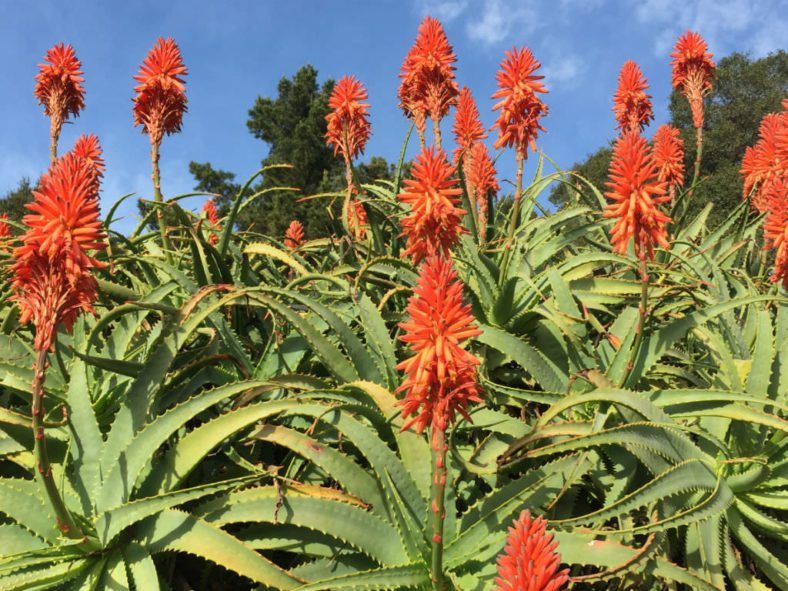Aloes come in various growth forms, from small miniatures to tall single-stemmed or branched trees, while certain species even form large tangled shrubs. The usually swollen and fleshy leaves are more or less lance- or sword-shaped in outline and boat-shaped in cross-section. Leaves are arranged in terminal rosettes and armed along their margins with usually sharp but sometimes soft teeth.
Flowers are arranged in candle-like or cone-shaped inflorescences, which can be branched or simple. The most common shape of flowers found in the Aloe genus is tubular, although some species have curved or even bell-shaped flowers. They are typically brightly colored and usually feature various red, orange, and yellow hues, but some species have flowers in green, pink, or white.
Aloes are very popular and some of the most rewarding plants to cultivate. They thrive in low-water environments, such as dune scapes or rock gardens. Aloes work well as edgings or borders, depending on size, and can also be planted in colonies for a dramatic effect. Their sturdy appearance contrasts nicely with more delicate plants, making them good additions to perennial or tropical gardens. Aloes are also frequently grown as container plants, both indoors and out. Most of them bloom at least once a year with the proper care.

Bloom Time
The bloom time of Aloe plants varies by species, but they often bloom sporadically throughout the year. Most Aloes bloom in winter, while some groups, like the Grass Aloes, usually bloom in spring or summer.
Growing Conditions
Aloes thrive in warmer climates where winter temperatures do not drop below freezing. In areas where colder temperatures are possible, the plants must be protected if temperatures drop below 32°F (0°C) for more than a few hours. While they tolerate full sun, bright reflected light might become too much for them. Water them every other week in summer, and winter rainfall will take care of them for the rest of the year. They prefer sandy, well-draining soil; you should ensure it is dry before planting them in the ground.
Source: sfgate.com
Links
- Back to genus Aloe
- Succupedia: Browse succulents by Scientific Name, Common Name, Genus, Family, USDA Hardiness Zone, Origin, or cacti by Genus